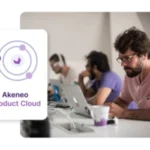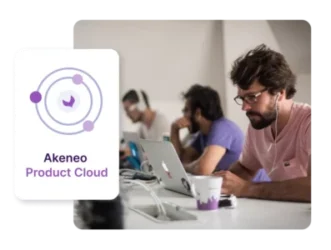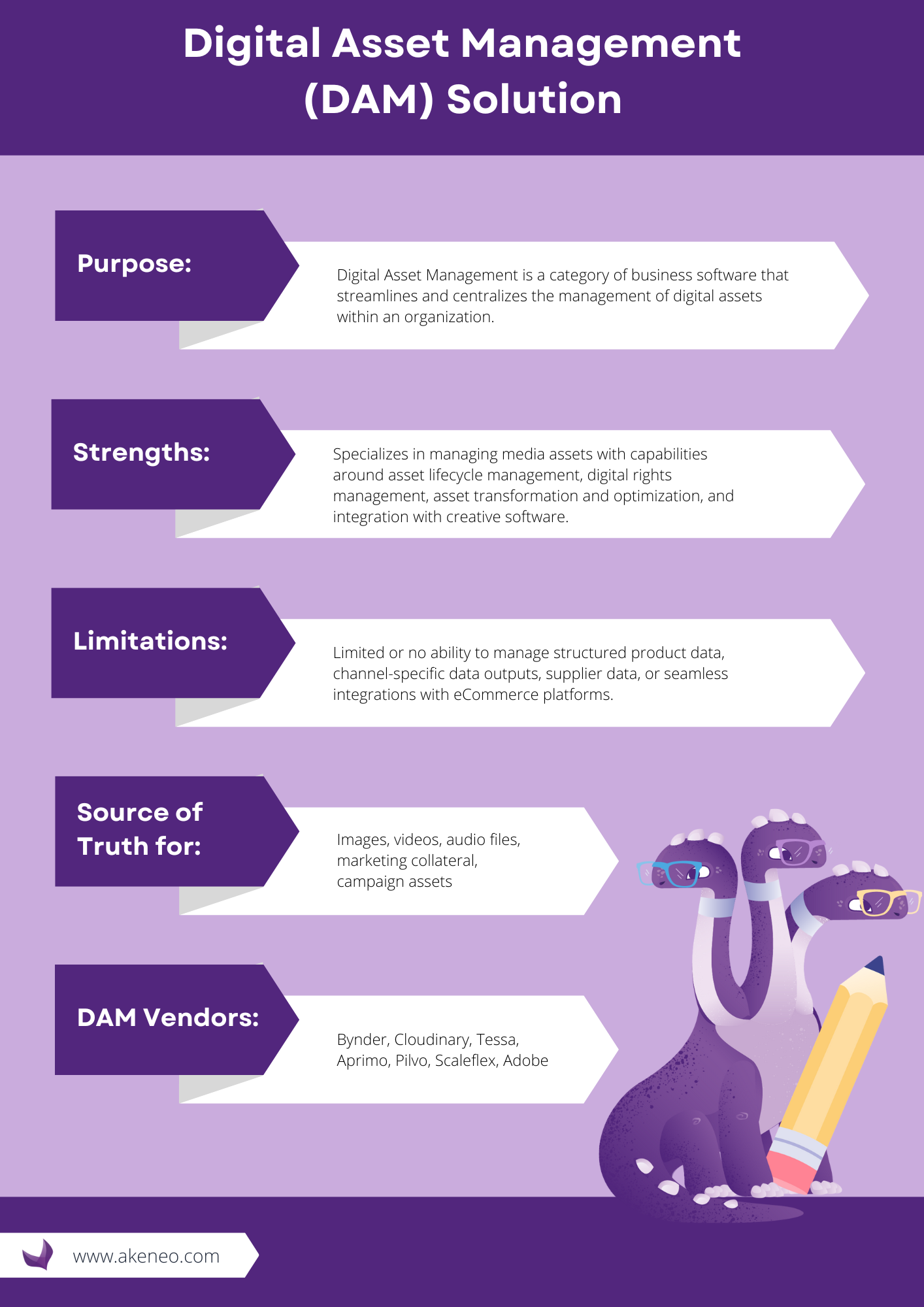How to Design Your PXM Program For Success
In this latest guest post from Akeneo partner Valtech, learn how to build a successful PXM program by assembling the right team, adopting interactive delivery methodologies, developing clear roadmaps, establishing risk management processes, and prioritizing change management. With real-life examples and actionable insights, this article provides a roadmap for navigating the evolving landscape of product catalog management system implementation. Dive in now to unlock the keys to PIM integration success!

- A greenfield Implementation
- Replacing a legacy PIM
- A migration from an on-premises PIM to a SaaS Platform
- Integrating existing PIM with new systems
- Expanding the existing PIM in new Business Units and Markets
How to Build a Successful PXM Program
#1 Assemble the right PXM program team players
Success starts with aligning key players, and building the right dynamic around the right objectives with not only your integration team, but also your client team. But with situation like this where IT & business skills are heavily intertwined, who do you really need on your team? Here’s our recommendation if you’re working with a PXM integrator.Core PXM implementation team
- Lead consultant or Practice lead. He/She is often the most senior PXM/PIM consultant in the crew. They’ve seen it all and typically have a minimum of 5 years of experience. With a 20-30% of allocation to your program, they can guide the business consultant who has to do most of the configuration heavy lifting.
- Business consultant. Depending on the size of the project we recommend a senior or at least an intermediate consultant who Iwill help you get the most out of your data model, product lifecycle, and workflows strategy. They’ll also be your go-to person for adoption. We talk in general between 50% to 100% allocation to a project.
- Tech consultant. This is a profile we created as most PIM solutions are now leaning towards SaaS only. Their role is between a developer and an architect, and although they don’t need to know customization, they’ll need a deep business understanding and a mastery of API connections to be able to adapt and succeed. The tech consultant’s primary role is to keep the technology easy to maintain. We talk in general between 30% to 80% allocation to a project.
- Architect. Depending on the size of the program and the number of other systems connected to your PIM, a solutions architect could be helpful. Their role is mainly to align integration strategies during the discovery/design phase. His role is between 10-20%.
- Project Manager. You always need to have that person in your team that understands how to keep the group on track, on budget, and on time! In general, we ask this person to understand the biggest milestones associated with the project, along with the roles and responsibilities of each and every one of your team members. We typically allocate between 10-15% to the project.
- Practice Director. A PXM program will get you into politics really fast. If you want to make sure the quality control is there and you have an opinion of someone who has significant expertise in this space, then you might want to establish a Practice Director with at least 7+ years of experience.. The allocation of the budget is not more than 5-10% in case necessary.
Client PXM team
Once your PIM is successfully implemented, you’ll need a team of PXM enthusiasts to ensure that your project is successfully adopted, and continues to live and get the necessary upgrades to make your product catalog shine!- PIM Champion. You need one leader who is willing to make the harsh decisions, who has a bird’s eye view on all of your processes, who will act as a moderator for your teams and understands their pain points, and who will be responsible to control the use of your solution. When doing the adoption, he either leads it or designates the person he believes will help get you the stickiness such a platform needs.
- Product Content Specialists. These are either your product managers, product marketing specialists, or in certain cases a vendor who deeply knows your product catalog and the detailed specifications. They will help you select the proper attributes, the proper format, and the values to make a difference.
- Channel specialists. Typically from the marketing or the merchandising team, the channel specialist will master all the requirements necessary for your attributes to be received by different channels (i.e. Amazon, Home Depot, any distributor, etc…). They are also responsible for reviewing the data before sending it to their respective channels and can work along with the PIM champion & product specialists in order to refine the data.
- Architect. This will be the exact same role as you had in the Core PXM Implementation team, except this one will be on the client side.
- Solution or enterprise architect. Really senior architect for whom additional systems have no secret. This role would be necessary when many systems are connected to your PIM so they can apply the perfect strategy to secure technical scaling over time.
- Additional Middleware engineers. Middleware is the future as more and more platforms become SaaS. There needs to be a middle-man to be able to improve performance when transferring a huge amount of data.
- Other solution developers or technical consultants for API integration. No comments here 🙂
- Change management specialist. When the organization is too large, or if the legacy systems and employees have been here for a long time, there needs to be someone specialized in the analysis and communication of potential resistance to change to help ensure that you have a successful, efficient adoption process.
#2 Adopt an interactive delivery methodology
In today’s world with dynamic requirements and flexible needs, customers look for three key things:- Easy configuration
- Early improvements
- Continuous delivery

Benefits of an Agile-Based Iterative Development
- Close Collaboration – Allows for a better understanding of not just requirements and expectations but also mitigation of measures and fixes.
- Early Visibility – Early view of initial high priority features in the form of an MVP: e.g. Product Attribute pages available to be shown with sample data at the end of Sprint 1.
- Continuous Improvements – Opportunity to fix and improve something that does not meet customer expectations – e.g. Update the Naming Convention of Images coming from DAM to include additional fields.
- Risk Reduction – Continuous iteration and feedback lowers risks and allows opportunities to correct mistakes at an early stage.
#3 Develop a clear roadmap & vision
A systematic approach towards implementing PIM starts with building a scalable PIM roadmap that is adaptable and scalable for foreseen and unforeseen risks to come in the future. A PXM-focused roadmap will:- Define the strategic vision of the PIM and end-goals of the organization
- Act as a guiding document for implementation and adoption
- Provide visual clarity of the Scope of Work
- Enable both internal (i.e. key users) and external (agencies, consultants, etc…) stakeholder alignment

#4 Establish proper risk management processes
Any major transformation program comes with its own set of risks and hurdles, and PIM implementation is no different. Hurdles can appear in many areas and are not just limited to scope management. If we divide the hurdles of a PIM project into 3 buckets of Business, Technical and Management, the classification would look something like this:Business Hurdles
- Little to no understanding of the product catalog structure
- Failure to understand the creation, enrichment, and syndication process workflows
- No data governance policies established
- Underestimating product complexity
Technical Hurdles
- Complex integration landscape
- Data and information security
- Lack of understanding of the capabilities existing legacy platforms
Management Hurdles
- Lack of subject matter knowledge to execute a PIM project
- Failure to get commitment from leadership
- No strategic vision for enterprise adoption
- Strategies to mitigate the risks
- Prioritizing and tracking on a severity level basis
- Deploying resources to neutralize risks
#5 Establish change management
Whether the transition is from an MS-Excel & email-based process to a PIM, or from an on-premises PIM to a cloud-based SaaS PIM, or any upheaval in habits or processes that impacts people, – change matters, and its management is important for adoption. Change management is especially crucial for organizations that are implementing a new solution among “old habits” and a sticky legacy system. You need to provide a clear and structured approach to transitioning individuals, teams, and the entire organization from the current product data management to the future one. Here are some reasons why it’s essential to consider the change management during any solution integration:- Stakeholder Resistance: If you have any sort of old system already in place, it’s common for a lot of users to be used to these older systems, processes, and execution methods. By identifying the different sources of resistance, it will be easier to set the right strategy to make the change happen.
- Uncertainty: Not understanding why a new solution is implemented can lead to real misalignment among all stakeholders. It’s crucial to correctly communicate the change, purpose, objectives, and advantages of this new integration and align all the stakeholders involved before, during, and after the integration. Everybody needs to understand the real impact of integration on the global business strategy.
- Lake of Engagement: It becomes important to have the right team of experts who can help determine the current pain points affecting the current product experience. Whether it’s harmonizing data or launching a new eCommerce portal, setting correct business goals is critical. Involving the right team to address the real business challenges is key. If you involve the right key users, it will bring harmony to the entire organization.
- Skills Gaps: By integrating the new PIM solution, some users may feel as if they don’t have the skills to adapt to the new processes and technology, but this is not the case as this knowledge will be useful to build the new integration! Train, support, and guide the users to make them feel safe and ensure a better adoption process. Change requires constant monitoring and evaluation to ensure that it is permanently integrated into process, people, and technology!
- A leading Food & Beverages manufacturer from India decides to enter the Canadian markets and launch its own website along with other channels like Walmart and Loblaws; that would require onboarding new BUs and users from Canada
- To meet regulatory requirements in Canada, the Marketing Description needs to be displayed in both English and French
- The existing PIM solution would then require enhancements applicable to Canada which would include addition of new fields, addition of new export templates, minor changes in the User Interface etc.
























